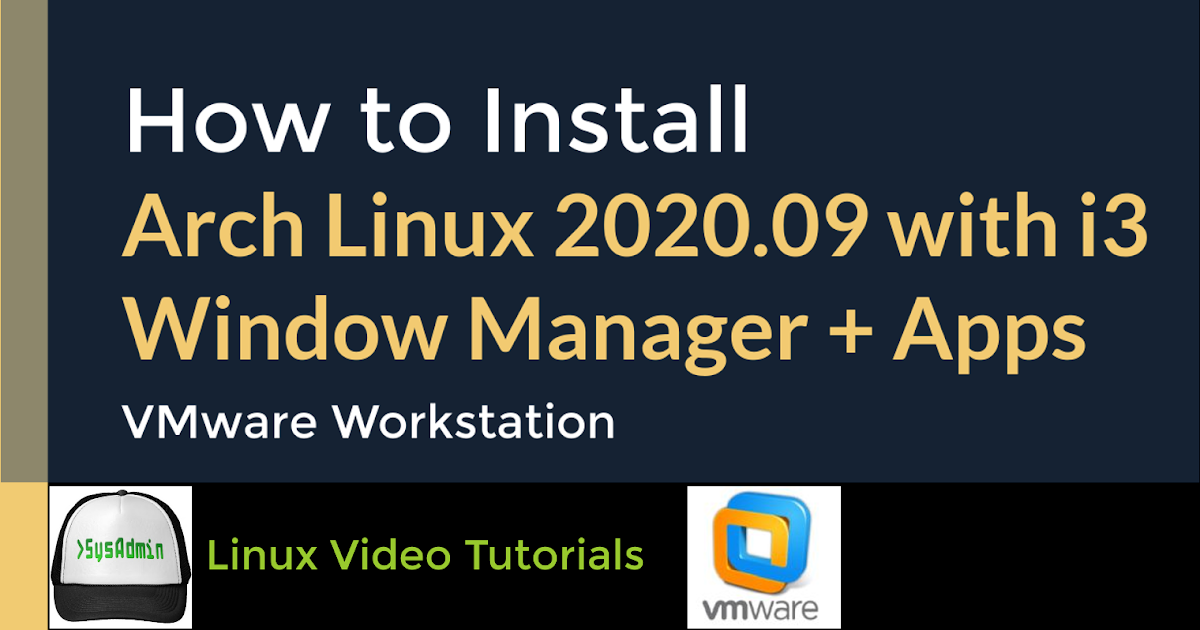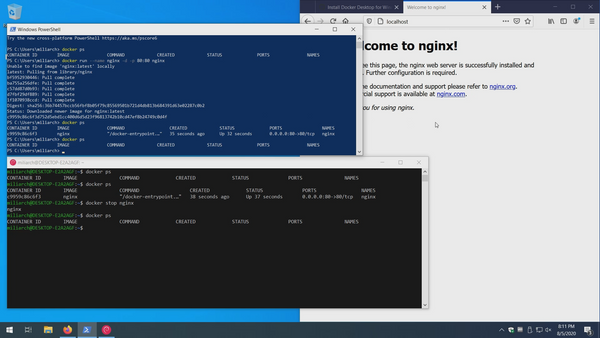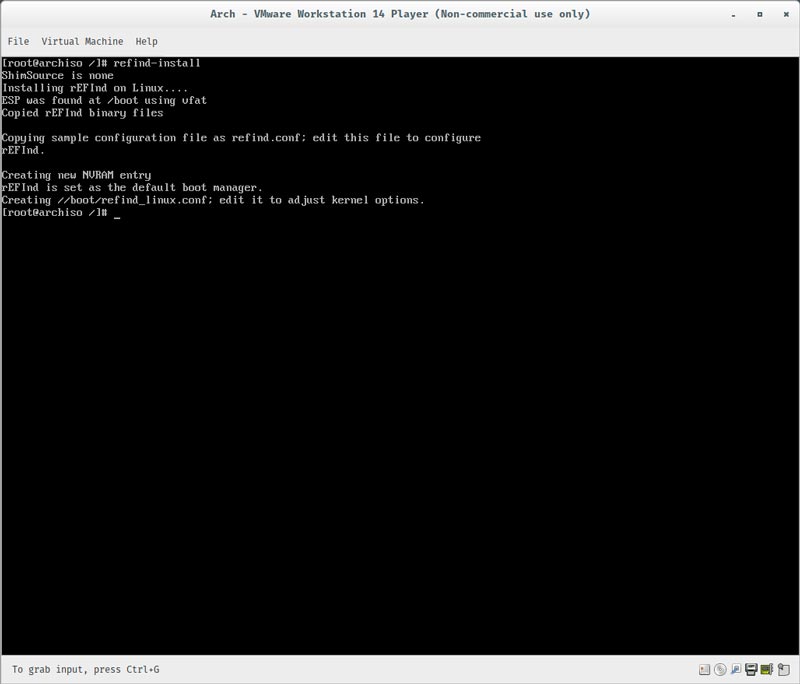

If you Additional partitions, then those need to be mounted on the respective directories on /mnt. (root) partition must be mounted on /mnt directory. Once you have formatted the partitions, use the mount command to mount them. Mkswp /dev/sda2 UEFI mkfs.fat -F32 /dev/sda1 You can format /boot or /efi (/dev/sda1) as EXT2 or EXT3 for BIOS and Fat32 for UEFI, Swap (/dev/sda2) as swap and / (/dev/sda3) as EXT4 filesystem. Now, its time format the created partitions with the required file systems. dev/sda3 – / (root) Arch Linux Partitions Step 6: Create Filesystem The disks can have other names such as vda, hda, etc.

The name of the disk varies depending upon the system. The system has a 1 TB disk (/dev/sda) and will use that disk for OS installation.

First, list the available disks using the fdisk command. We will now create the partitions on the hard disk for the OS installation. Replace the network card and IP address according to your environment.
Arch linux vmware download#
If your system does not get a reply, then configure a static IP address on your system so that your system can connect to the internet to download packages. If your system has Wi-Fi, use the iwctl, an interactive prompt to authenticate to the wireless network.Ĭheck the internet connectivity. My system has an ethernet interface, which is connected to the internet via LAN cable. If your environment has a DHCP server, then the system will get an IP Address automatically. Step 4: Setup NetworkĪs I said earlier, the system needs an active internet connection. In case the system did not boot into the mode you desired, refer to the system manual. If the directory does not exist, the system may be booted in BIOS mode. If the above command lists the contents without error, then the system is booted in UEFI mode. ls /sys/firmware/efi/efivars Arch Linux Booting Mode Check However, you can validate it by listing the directory. From the Arch Linux installer screen, you can easily find it out whether the system is booted in BIOS or UEFI. Arch Linux Root Prompt Boot Mode (BIOS or UEFI)īooting into the right mode helps us create the required partitions for the system. Once the system boots from Live USB or CD, you will get the Arch Linux installer screen, like below.Ĭhoose Boot Arch Linux (x86_64) and then press Enter.įinally, after various checks, you will get the root prompt. To boot from CD, you need to select boot from CD/DVD ROM drive. To boot from Live USB, you need to select boot from USB or removable drive. Power on your system and press F2, F10 or F12 to change/select the boot order. Growisofs -dvd-compat -Z /dev/sr0=/home/user_name/Downloads/LinuxMint.iso Step 3: Boot from Live USB or CD/DVD/BD # CD #Ĭdrecord -v -sao dev=/dev/sr0 isoimage.iso
Arch linux vmware iso#
Replace /path/to/archlinux.iso with the path to the downloaded ISO file. dd bs=4M if=/path/to/archlinux.iso of=/dev/sdx status=progress oflag=sync Write a bootable CD/DVD/BD Replace /path/to/archlinux.iso with the path to the downloaded ISO file and /dev/sdx with your USB drive name. We will now create a live USB / write a bootable CD from the downloaded ISO image. Step 2: Create a Live USB / Write a Bootable CD Step 1: Download Arch Linuxĭownload the latest version of Arch Linux from the official website. If needed, you can set up a secure boot post the installation. You would need to disable the secure boot to the ISO image.
Arch linux vmware how to#
Here, we will see how to install Arch Linux’s latest version (v 2021.01.1) from USB / CD.Īrch Linux installation process requires an internet connection to retrieve packages from Arch Linux mirrors.Īrch Linux ISO images do not support secure boot. If you do not have time to install Arch Linux 2021, use the below link to download a ready to run Arch Linux 2021 VirtualBox and VMware images.Īrch Linux 2021 VirtualBox/VMware Images Install Arch Linux



 0 kommentar(er)
0 kommentar(er)
